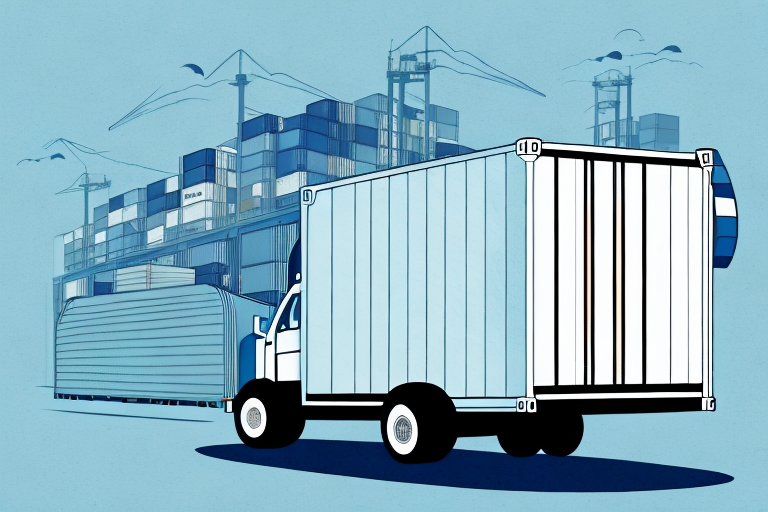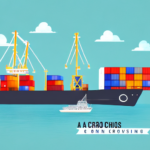Gri Freight: A Comprehensive Guide to Understanding the Basics
When it comes to shipping goods, businesses have various transportation options, including air, sea, and ground transport. For those seeking a cost-effective and efficient method, Gri Freight stands out as a valuable option. This guide provides an in-depth analysis of Gri Freight, covering its definition, operational mechanisms, service types, and essential tips for preparing your goods for transport.
Understanding Gri Freight
What is Gri Freight and How Does It Work?
Gri Freight, short for General Rate Increase, refers to the periodic adjustments in freight rates by shipping lines. These increases typically cover rising costs such as fuel, labor, machinery, and other operational expenses. Shipping lines announce Gri Freight rates quarterly, impacting global shipping costs.
When selecting Gri Freight services, shipping lines provide a comprehensive quote that includes Gri Freight charges alongside other fees like terminal handling, documentation, and customs charges. These quotes are influenced by factors such as container type and size, shipment origin and destination, and the chosen mode of transportation.
It's crucial to monitor Gri Freight rates and associated surcharges, such as peak season or emergency bunker surcharges, to effectively plan and budget your shipments. Staying informed helps prevent unexpected costs and ensures smooth shipping operations.
The Role of Gri Freight in the Shipping Industry
Gri Freight is vital for maintaining the financial health of shipping lines, enabling them to cover operational costs and remain profitable. For businesses, understanding Gri Freight is essential as it directly affects shipping expenses and, consequently, overall profitability.
Freight charges are calculated based on cargo weight, volume, and distance. Shipping lines utilize standardized systems to provide accurate estimates, allowing businesses to budget effectively. Additionally, the type of cargo—such as hazardous or oversized goods—can influence Gri Freight charges due to the need for special handling or equipment.
Benefits and Drawbacks of Gri Freight Services
Pros of Using Gri Freight
- Cost Predictability: Gri Freight rates are typically announced in advance, allowing businesses to budget with greater accuracy.
- Competitive Pricing: Generally, Gri Freight rates are lower compared to other shipping options, making it a cost-effective choice.
- Extensive Network: Shipping lines offering Gri Freight often have wide carrier and route networks, providing flexibility in delivery options.
Cons of Using Gri Freight
- Rate Fluctuations: Despite announced rates, Gri Freight can still vary based on market conditions, potentially complicating budgeting efforts.
- Longer Transit Times: Gri Freight services may have longer delivery times, which can be a drawback for time-sensitive shipments.
- Additional Surcharges: Unexpected surcharges like peak season fees can increase overall shipping costs.
Types of Gri Freight Services
Full Container Load (FCL) and Less than Container Load (LCL)
FCL is ideal for businesses requiring the entire container for large shipments, offering greater security and lower per-unit costs. LCL suits businesses with smaller shipments, allowing them to share container space with other shipments, thereby reducing costs.
Specialized Container Services
- Refrigerated Containers: For perishable goods requiring temperature-controlled environments.
- Open Top Containers: Suitable for oversized cargo that doesn't fit in standard containers.
- Flat Rack Containers: Designed for heavy or awkwardly shaped goods needing extra support.
Intermodal Services
Intermodal Gri Freight involves using multiple transportation modes—such as trucks, trains, and ships—to move goods over long distances and varied terrains. This method enhances flexibility and efficiency for complex shipping routes.
Transportation Modes and Their Impact
Sea Transport
Sea transport is the most common mode for Gri Freight due to its ability to handle large volumes at lower costs. It offers flexibility in shipping various types of goods and connecting diverse global locations. However, sea transport typically involves longer transit times compared to air transport.
Air and Land Transport
For shipments requiring speed, air transport is preferred despite higher costs. Land transport is suitable for heavy or bulky items, offering reliable delivery over shorter distances.
The choice of transportation mode depends on factors like shipment urgency, nature of goods, and budget constraints.
Cost Factors in Gri Freight Services
Primary Cost Influencers
- Distance: Longer distances increase transportation costs.
- Container Type and Size: Larger or specialized containers incur higher charges.
- Type of Goods: Hazardous or oversized items may require special handling, elevating costs.
Seasonal and Weight Considerations
Gri Freight rates often rise during peak shipping seasons due to increased demand. Additionally, heavier shipments may necessitate extra handling and equipment, further impacting costs.
Additional Services
Services like customs clearance assistance and warehousing can add to the overall cost. It's essential to evaluate these services based on your shipping needs and budget.
Selecting the Right Gri Freight Provider
Key Selection Criteria
- Industry Experience: Providers with extensive experience are better equipped to handle complex shipping requirements.
- Reputation: Look for providers with positive reviews and a track record of reliability.
- Service Offerings: Ensure the provider offers the specific services you need, such as specialized containers or intermodal transport.
- Network Strength: A robust network of partners and agents ensures seamless shipment across various locations.
Evaluating Rates and Contracts
Compare rates from multiple providers and understand the terms of service contracts. Transparent pricing and flexible terms can help you choose a provider that aligns with your business goals.
Optimizing Your Gri Freight Shipments
Preparing Your Goods for Transport
- Secure Packaging: Use appropriate materials to protect goods during transit.
- Clear Labeling: Ensure all packages are clearly labeled with necessary information.
- Proper Documentation: Prepare all required shipping documents to facilitate smooth customs clearance.
- Insurance Coverage: Insure your goods to safeguard against potential losses or damages.
Compliance with Regulations
Ensure your shipments adhere to the destination country’s customs regulations and import/export requirements to avoid delays and additional costs.
Overcoming Challenges in Gri Freight Transportation
Common Challenges
- Weather Delays: Adverse weather conditions can disrupt shipping schedules.
- Port Congestion: Busy ports can lead to delays in cargo handling and delivery.
- Customs Issues: Complex customs regulations can cause delays if not properly managed.
Strategies to Mitigate Challenges
Partnering with experienced Gri Freight providers can help navigate these challenges effectively. Additionally, proactive planning and real-time tracking can enhance shipment reliability and timeliness.
Innovations and Future Trends in Gri Freight
Technological Advancements
The adoption of digital technologies like blockchain and GPS tracking is revolutionizing the Gri Freight industry by enhancing transparency and operational efficiency. These technologies facilitate real-time tracking and secure data management, improving overall shipment reliability.
Sustainability Initiatives
Shipping lines are increasingly investing in eco-friendly technologies and practices to reduce their carbon footprint. Innovations such as fuel-efficient vessels and sustainable packaging are becoming standard to meet environmental regulations and consumer expectations.
Future Outlook
The Gri Freight sector is poised for continued growth as businesses seek cost-effective and efficient shipping solutions. However, the industry must navigate challenges like rising competition and evolving trade regulations. Staying abreast of industry trends and collaborating with reliable providers will be crucial for future success.
Real-World Applications of Gri Freight
Case Studies
Numerous businesses have successfully integrated Gri Freight into their operations, yielding significant benefits:
- Manufacturing Company: Reduced shipping costs by 20% by switching to Gri Freight services.
- Retail Business: Enhanced shipping efficiency and decreased transit times through partnerships with reliable Gri Freight providers.
These examples demonstrate how strategic use of Gri Freight can lead to substantial cost savings and operational improvements.
Conclusion
Gri Freight offers a vital and cost-effective solution for businesses of all sizes looking to optimize their shipping operations. By understanding the fundamentals of Gri Freight, including service types, cost factors, and best practices, businesses can make informed decisions that enhance their supply chain efficiency and profitability. Partnering with the right Gri Freight provider and staying updated on industry trends ensures a successful and streamlined shipping process.






















